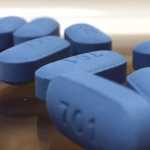A program to reduce HIV incidence among injection drug users (IDUs) with Truvada (tenofovir/emtricitabine) as pre-exposure prophylaxis (PrEP) would be cost prohibitive and not cost effective. Publishing their findings in Annals of Internal Medicine, researchers used a computer model to estimate the public health benefit of a national PrEP program for IDUs.
The model estimated the effects of promoting PrEP alone, PrEP with frequent screening for the virus and PrEP with frequent screening and immediate antiretroviral (ARV) treatment for those who test positive for the virus.
The researchers concluded that, over a 20-year period, enrolling a quarter of HIV-negative IDUs in a program promoting PrEP, testing regularly and starting treatment promptly would be the most effective way to reduce HIV incidence in the IDU population. But with the current price of ARVs, this effort would cost an additional $44 billion. Although this approach would prevent an estimated 21,500 new HIV cases over two decades, it would be cost prohibitive and would not be cost effective.
An accompanying editorial argues that even if the cost of Truvada came down, PrEP for IDUs would still not be an efficient use of funds. A better use of resources is in the support of naloxone therapy, health insurance access, detoxification programs, opioid agonist therapy and needle exchange programs.
To read a press release about the study, click here.
To read the study abstract, click here.
To read an accompanying editorial, click here.







1 Comment
1 Comment